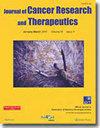A prospective observational study to assess the epidemiological profile of multiple primary cancers in Eastern India
IF 1.3
4区 医学
Q4 ONCOLOGY
引用次数: 0
Abstract
ABSTRACT Background: Multiple primary cancers once thought to be rare have become increasingly common as the lifespan of cancer survivors has increased with availability of better and more effective cancer treatment. However, their exact incidence is not known and data on their epidemiological characteristics are not available. Aim: The aim of this study is to study the epidemiologic characteristics of multiple primary cancers in the eastern region of India. Materials and Method: The study was conducted in the Department of Surgical Oncology, Medical College, Kolkata, from 2017 to 2020 over a period of 3 years. All patients with a diagnosis of second primary as per International Agency for Research on Cancer (IARC) definition or those developing a second primary within the study period were included for analysis. Data were recorded in form of preformed questionnaires. All the cases were followed up for at least 12 months. Result: Fifty cases of multiple primary tumors were identified, out of which 21 were synchronous while rest 29 were metachronous type. The male–female ratio was 1:1.2. The median age at presentation for index malignancy was 50 years. The most common malignancy in the synchronous group was a combination of variety of GI cancers (six cases). In the metachronous category, a combination of reproductive cancers (breast, ovary, cervix, and endometrium) along with Gastrointestinal cancer (GI) cancers (colon, rectum) was most frequently found (eight cases). Definite risk factors for multiple primary tumors were identifiable in 10 cases: arsenic exposure in 5 cases, hereditary in 4 cases, and immunosuppression in 1, while in 8 cases, risk factors were only speculative (radiation 5 cases, chemotherapy 3). At the time of the last follow-up, 36 subjects were alive and 3 dead while the status of 11 subjects was unknown. Conclusion: This is the first comprehensive study on multiple primary cancers and the largest so far in India. Our study overcomes the shortcoming of previous case series from our subcontinent. The merits of our study include the use of the most accepted IARC definition, updated staging guidelines with long follow-up, and reliable survival data. Additionally, we could identify risk factors in 50% of our subjects. And our study shows various new combinations of cancers not reported before. Clustering of cases in the young adolescent group (25–49) years is also a new finding. We also highlight the existing ambiguity in the way this entity is defined. Demerits include the loss of follow-up data in a significant number of patients.一项评估印度东部多原发癌症流行病学概况的前瞻性观察研究
背景:随着更好、更有效的癌症治疗手段的出现,癌症幸存者的寿命延长,曾经被认为罕见的多发性原发癌症变得越来越普遍。然而,其确切发病率尚不清楚,也没有关于其流行病学特征的数据。目的:本研究的目的是研究印度东部地区多种原发癌症的流行病学特征。材料与方法:本研究于2017年至2020年在加尔各答医学院外科肿瘤科进行,为期3年。根据国际癌症研究机构(IARC)的定义,所有诊断为第二原发性的患者或在研究期间出现第二原发性的患者均被纳入分析。数据以预填问卷的形式记录。所有病例均随访至少12个月。结果:共发现多发原发肿瘤50例,其中同期21例,异时型29例。男女比例为1:1.2。表现为恶性肿瘤的中位年龄为50岁。同步组中最常见的恶性肿瘤是多种胃肠道肿瘤的组合(6例)。在异时性类别中,最常见的是生殖癌(乳腺癌、卵巢癌、子宫颈癌和子宫内膜癌)以及胃肠道癌(结肠癌、直肠癌)的组合(8例)。多发原发肿瘤的明确危险因素有10例:砷暴露5例,遗传4例,免疫抑制1例,另有8例危险因素仅为推测性危险因素(放疗5例,化疗3例)。末次随访时,存活36例,死亡3例,状态不详11例。结论:这是首个针对多种原发癌症的综合研究,也是印度迄今为止规模最大的研究。我们的研究克服了我们次大陆以前的病例系列的缺点。本研究的优点包括使用最被接受的IARC定义,更新的分期指南和长期随访,以及可靠的生存数据。此外,我们可以在50%的受试者中识别出危险因素。我们的研究显示了以前没有报道过的各种新的癌症组合。聚集在年轻的青少年组(25-49岁)的病例也是一个新的发现。我们还强调了在定义该实体的方式中存在的歧义。缺点包括大量患者的随访数据丢失。
本文章由计算机程序翻译,如有差异,请以英文原文为准。
求助全文
约1分钟内获得全文
求助全文
来源期刊
CiteScore
1.80
自引率
15.40%
发文量
299
审稿时长
6 months
期刊介绍:
The journal will cover technical and clinical studies related to health, ethical and social issues in field of Medical oncology, radiation oncology, medical imaging, radiation protection, non-ionising radiation, radiobiology. Articles with clinical interest and implications will be given preference.

 求助内容:
求助内容: 应助结果提醒方式:
应助结果提醒方式:


